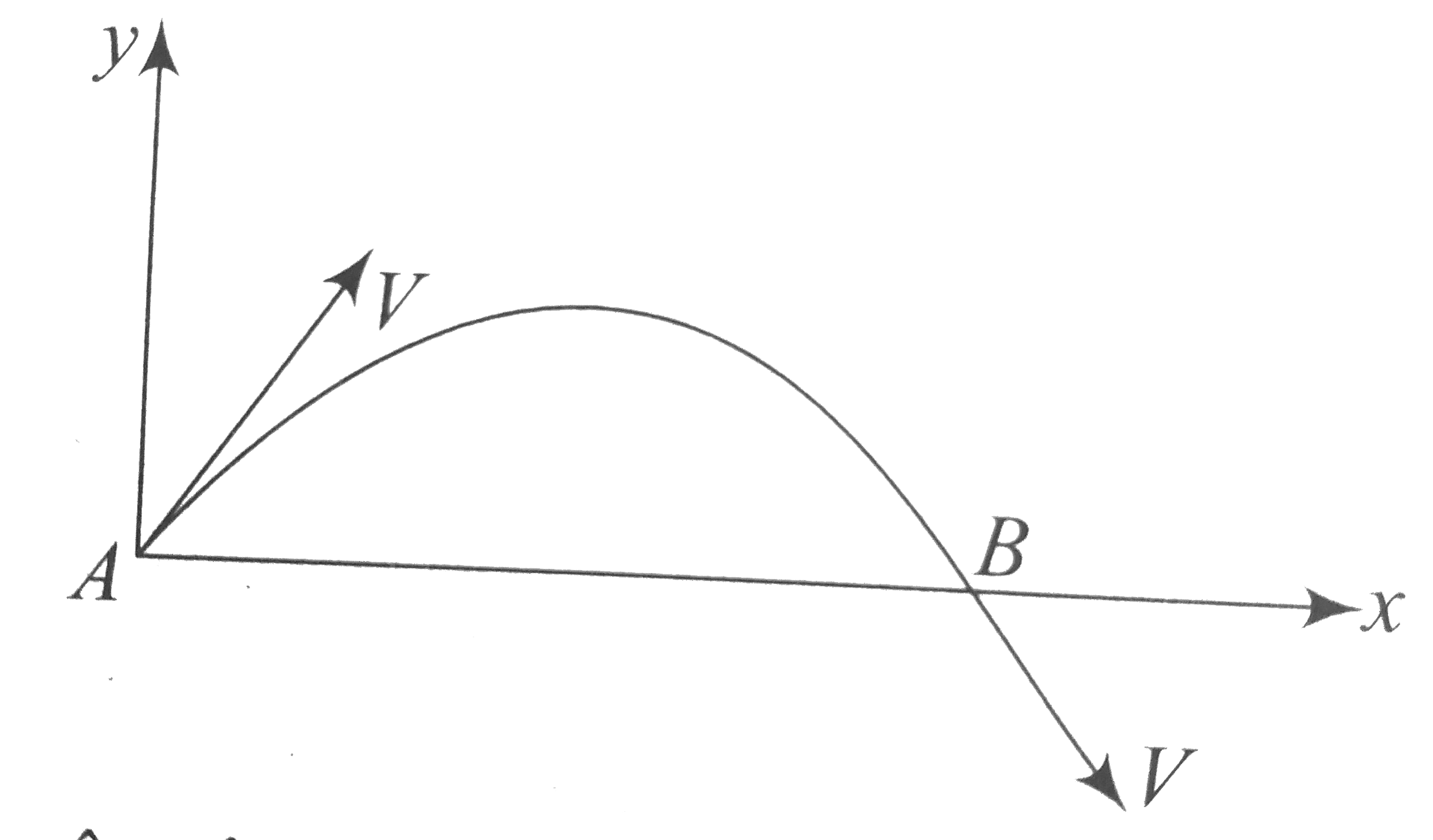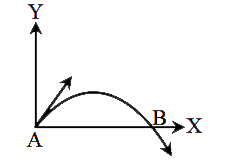Find the velocity of a projectile at the highest point, if it is projected with a speed 15ms−1 in the direction 45∘ above horizontla. (take g = 10ms−2)
The correct Answer is:15√2ms−1 along horizontal .
To find the velocity of a projectile at its highest point when projected with a speed of 15 m/s at an angle of 45 degrees above the horizontal, we can follow these steps:
Step 1: Determine the initial velocity components
The initial velocity u can be broken down into horizontal and vertical components using trigonometric functions:
- The horizontal component ux is given by:
ux=ucos(θ)=15cos(45∘)
- The vertical component uy is given by:
uy=usin(θ)=15sin(45∘)
Step 2: Calculate the components
Using the values for cos(45∘) and sin(45∘):
cos(45∘)=sin(45∘)=1√2
Substituting these values:
ux=15⋅1√2=15√2m/s
uy=15⋅1√2=15√2m/s
Step 3: Analyze the motion at the highest point
At the highest point of the projectile's trajectory:
- The vertical component of the velocity vy becomes 0 (as the projectile momentarily stops moving upward before descending).
- The horizontal component of the velocity vx remains constant throughout the motion since there is no horizontal acceleration.
Thus, at the highest point:
vy=0m/s
vx=ux=15√2m/s
Step 4: Calculate the total velocity at the highest point
The total velocity v at the highest point can be calculated using the Pythagorean theorem:
v=√v2x+v2y
Since vy=0:
v=
⎷(15√2)2+02=15√2m/s
Final Answer
The velocity of the projectile at the highest point is:
v=15√2m/s≈10.61m/s
The initial velocity u can be broken down into horizontal and vertical components using trigonometric functions:
ux=ucos(θ)=15cos(45∘)
uy=usin(θ)=15sin(45∘)
Using the values for cos(45∘) and sin(45∘):
cos(45∘)=sin(45∘)=1√2
ux=15⋅1√2=15√2m/s
uy=15⋅1√2=15√2m/s
At the highest point of the projectile's trajectory:
- The vertical component of the velocity vy becomes 0 (as the projectile momentarily stops moving upward before descending).
- The horizontal component of the velocity vx remains constant throughout the motion since there is no horizontal acceleration.
vy=0m/s
vx=ux=15√2m/s
The total velocity v at the highest point can be calculated using the Pythagorean theorem:
v=√v2x+v2y
Since vy=0:
v=
⎷(15√2)2+02=15√2m/s
The velocity of the projectile at the highest point is:
v=15√2m/s≈10.61m/s
Topper's Solved these Questions
- MOTION IN A PLANEBOOK - AAKASH INSTITUTE ENGLISHCHAPTER - MOTION IN A PLANEEXERCISE - Assignement section -A Objective (one option is correct)
50 Videos
- MOTION IN A PLANEBOOK - AAKASH INSTITUTE ENGLISHCHAPTER - MOTION IN A PLANEEXERCISE - Assignement section -B Objective (one option is correct)
29 Videos
- MOTION IN A PLANEBOOK - AAKASH INSTITUTE ENGLISHCHAPTER - MOTION IN A PLANEEXERCISE - llustration 1 :
1 Videos
- MOCK_TEST_17BOOK - AAKASH INSTITUTE ENGLISHCHAPTER - MOCK_TEST_17EXERCISE - Example
15 Videos
- MOTION IN A STRAIGHT LINEBOOK - AAKASH INSTITUTE ENGLISHCHAPTER - MOTION IN A STRAIGHT LINEEXERCISE - ASSIGNMENT (SECTION - D)
15 Videos
Similar Questions
Knowledge Check
A girl standing on a stationary lift (open from above) throws a ball upwards with initial speed 50ms−1. The time taken by the ball to return to her hands is (Take g = 10ms−2)
Aa. 5 sBb. 10 sCc. 15 sDd. 20 s
A body is projected with a initial velocity of (8ˆi+6ˆj)ms−1 . The horizontal range is (g=10ms−2)
View SolutionA pebble is thrown vertically upwards with a speed of 20 m s−1. How high will it be after 2 s? (Take g = 10 m s−2)
View SolutionA particle is projected with velocity of 10ms at an angle of 15° with horizontal.The horizontal range will be(g=10ms2)
View SolutionTwo projectiles are projected at angles (θ) and (π2−θ) to the horizontal respectively with same speed 20m/s. One of them rises 10 m higher than the other. Find the angles of projection. (Take g=10m/s2)
View SolutionA stone is thrown with a speed of 10ms−1 at an angle of projection 60∘. Find its height above the point of projection when it is at a horizontal distance of 3m from the thrower ? (Take g=10ms−2)
View SolutionA stone is thrown with a speed of 10ms−1 at an angle of projection 60∘. Find its height above the point of projection when it is at a horizontal distance of 3m from the thrower ? (Take g=10ms−2)
View SolutionRange of a projectile with time of flight 10 s and maximum height 100 m is : (g=−10m/s2)
View Solution


